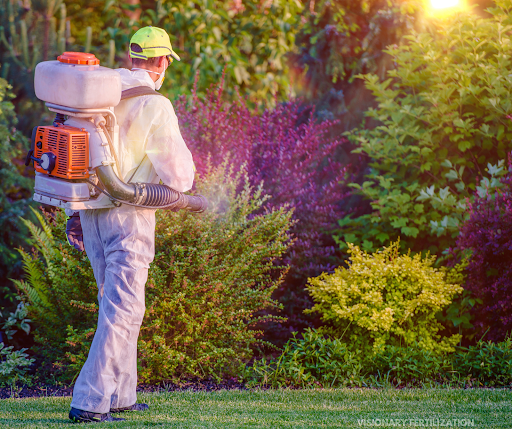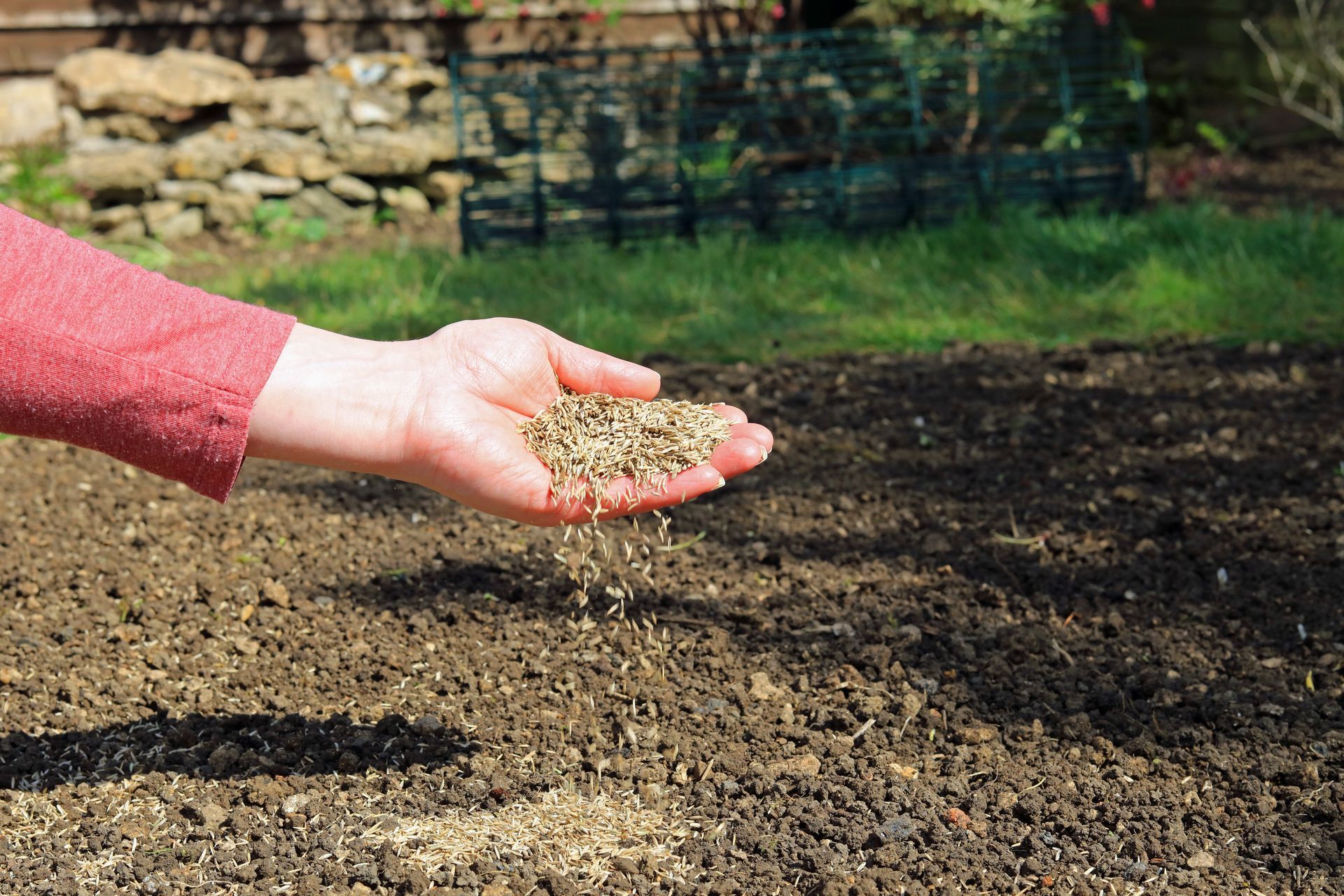March 6, 2025
Top 5 Common Lawn Pests in Shelby Township and How to Control Them

A lush, green lawn is the pride of any homeowner. However, common Michigan lawn pests can quickly turn your beautiful landscape into a patchy, unhealthy mess. These pests feed on grass roots, leaves, and stems, leading to discoloration, bald spots, and weakened turf, so identifying and controlling them early can save you time, money, and frustration.
If you’re ready to hand off pest control to the pros, give Visionary Fertilization a call. We’ll have your pest problem under control in no time.
1. Grubs
Grubs are the larvae of beetles like Japanese beetles, June bugs, and European chafers. These white, C-shaped larvae live underground and feed on grass roots, causing sections of your lawn to turn brown and to easily pull up – like a loose carpet.
Signs of Grub Infestation:
- Brown or dead patches in the lawn
- Soft, spongy turf that lifts easily
- Increased activity of raccoons, skunks, and birds digging in your yard
How to Control Grubs:
- Apply a preventive grub control treatment in early summer.
- Use beneficial nematodes, natural microscopic organisms that target grubs.
- Water deeply but infrequently to encourage deep root growth, making the grass more resilient.
- If the infestation is severe, consider a chemical grub control treatment, following the manufacturer’s guidelines.
2. Chinch Bugs
Chinch bugs are tiny insects that suck the juices from grass blades, causing the lawn to turn yellow and eventually die. These pests thrive in hot, dry conditions and can quickly spread across your lawn if left unchecked.
Signs of Chinch Bug Infestation:
- Yellow or brown patches that resemble drought damage
- Presence of small black-and-white bugs near the soil surface
- Turf that does not recover even after watering
How to Control Chinch Bugs:
- Keep your lawn properly watered and fertilized to maintain strong, healthy grass.
- Aerate the soil to improve water penetration and discourage bug populations.
- Apply insecticidal soap or neem oil as a natural remedy.
- Use a targeted pesticide if the infestation becomes severe.
3. Sod Webworms
Sod webworms are the larvae of lawn moths, and they feed on grass blades at night. These pests create silk-lined tunnels in the soil and cause small, irregular brown patches to appear on the lawn.
Signs of Sod Webworm Infestation:
- Small brown patches that gradually expand
- Presence of moths flying low over the grass in the evening
- Thinning or bare spots in the lawn
How to Control Sod Webworms:
- Mow your lawn regularly to remove adult moths before they lay eggs.
- Introduce natural predators such as birds by setting up bird feeders in your yard.
- Apply a biological insecticide like Bacillus thuringiensis (Bt), which targets caterpillar larvae.
- Water deeply and fertilize properly to promote strong turf growth.
4. Armyworms
Armyworms are caterpillars that feed on grass blades, creating widespread damage in a short period of time. They move in large groups, resembling an army marching through the lawn.
Signs of Armyworm Infestation:
- Rapidly expanding brown patches
- Grass blades that appear chewed or cut
- Presence of caterpillars on the soil surface in the morning or evening
How to Control Armyworms:
- Remove thatch buildup to reduce their hiding spots.
- Introduce beneficial insects such as ladybugs and parasitic wasps.
- Apply insecticidal soap or pyrethrin-based insecticides for severe infestations.
- Encourage natural predators like birds by maintaining bird-friendly landscaping.
5. Cutworms
Cutworms are another type of caterpillar that hides in the soil during the day and feeds on grass stems and blades at night. These pests often target new grass, making it difficult for seedlings to establish.
Signs of Cutworm Infestation:
- Circular or irregular patches of dead grass
- Small holes or tunnels in the soil surface
- Seedlings cut off at the base
How to Control Cutworms:
- Keep your lawn well-maintained by mowing and removing excess thatch.
- Use a natural insecticide like Bt or diatomaceous earth to target larvae.
- Introduce nematodes to the soil to reduce cutworm populations naturally.
- Apply a targeted chemical insecticide if infestations persist.
General Lawn Pest Prevention Tips
While specific treatments can help control individual pests, adopting a comprehensive lawn care routine will prevent infestations and keep your grass healthy year-round. Here are some best practices:
- Regular Mowing: Keep grass at the appropriate height to discourage pests from taking shelter.
- Proper Watering: Water deeply but less frequently to encourage deep root growth.
- Aeration & Overseeding: Reduce soil compaction and improve turf density to make your lawn more resistant to pests.
- Thatch Removal: Excess thatch provides a breeding ground for pests; remove it periodically.
- Use Beneficial Insects: Encourage natural predators like birds, ladybugs, and nematodes to help control pest populations.
- Timely Pest Control Applications: Apply natural or chemical treatments based on pest life cycles to maximize effectiveness.
Call Visionary Fertilization for Professional Lawn Pest Control
If you have a pest problem, we have the solution! Call us today.




